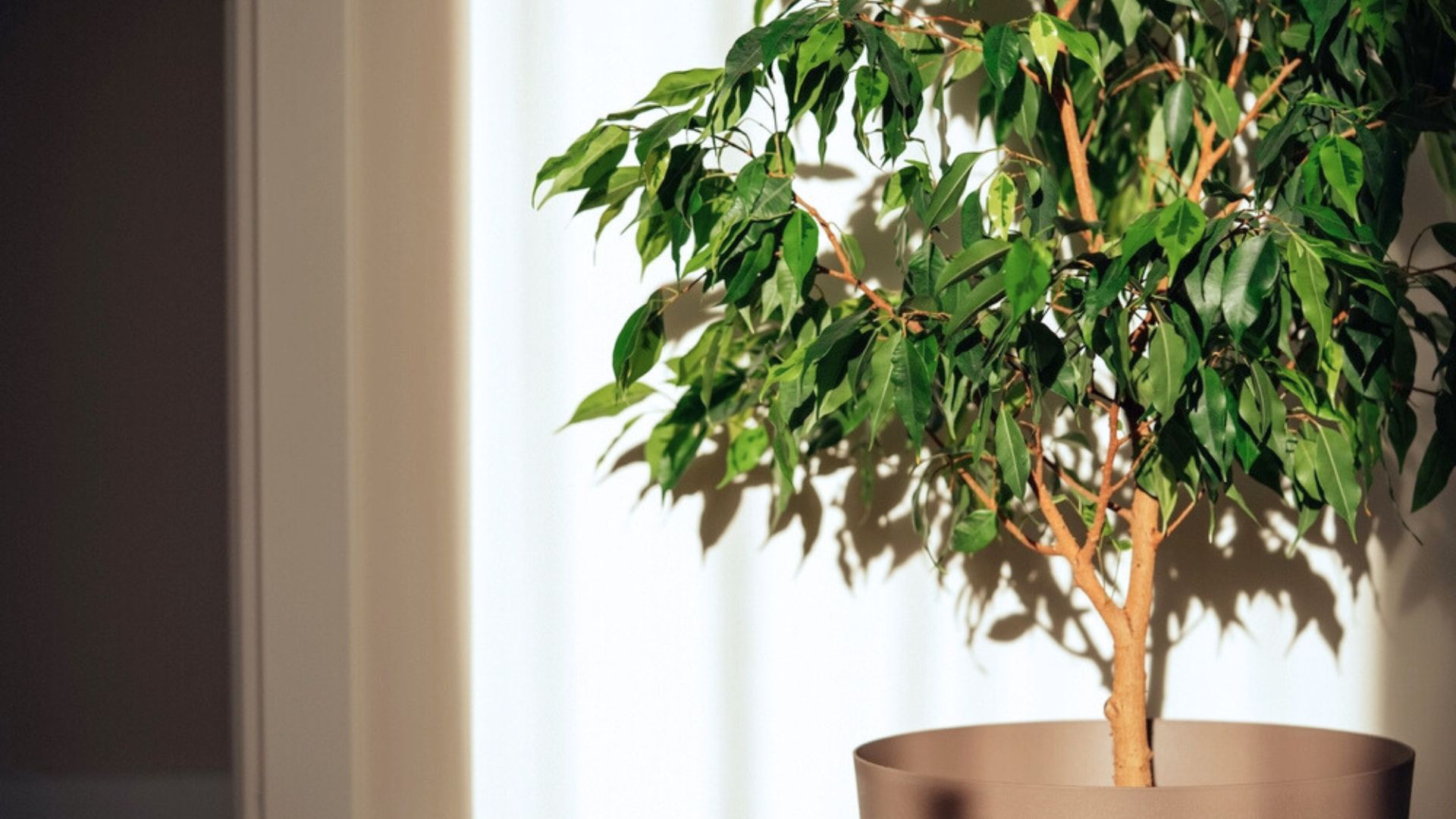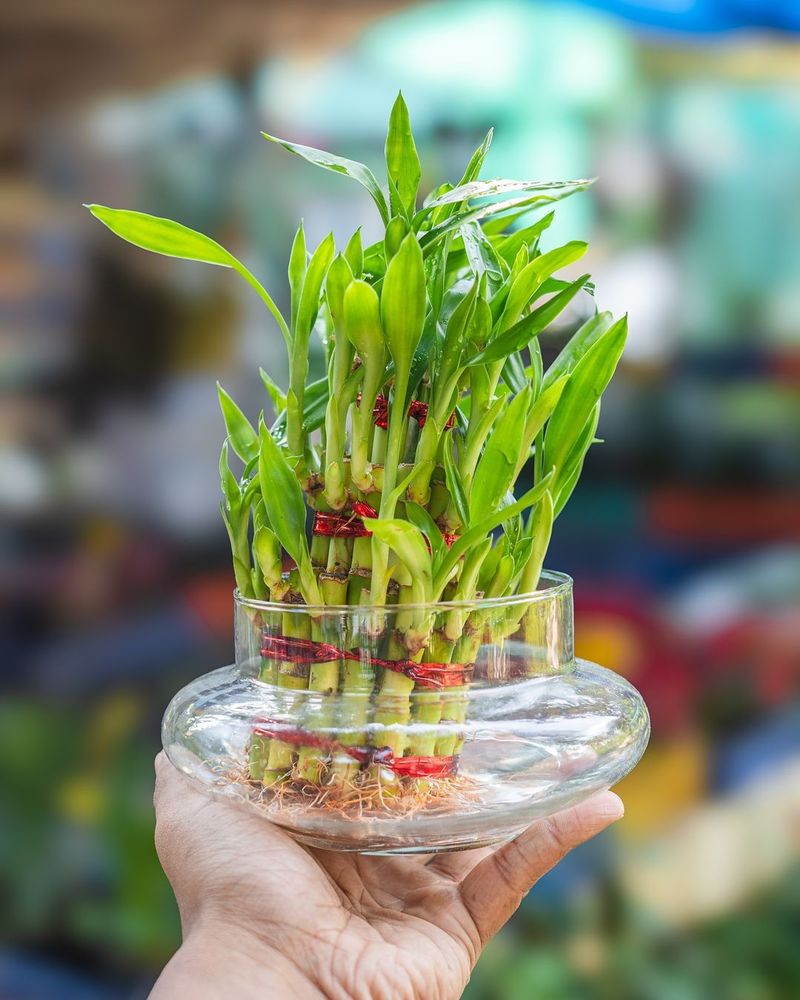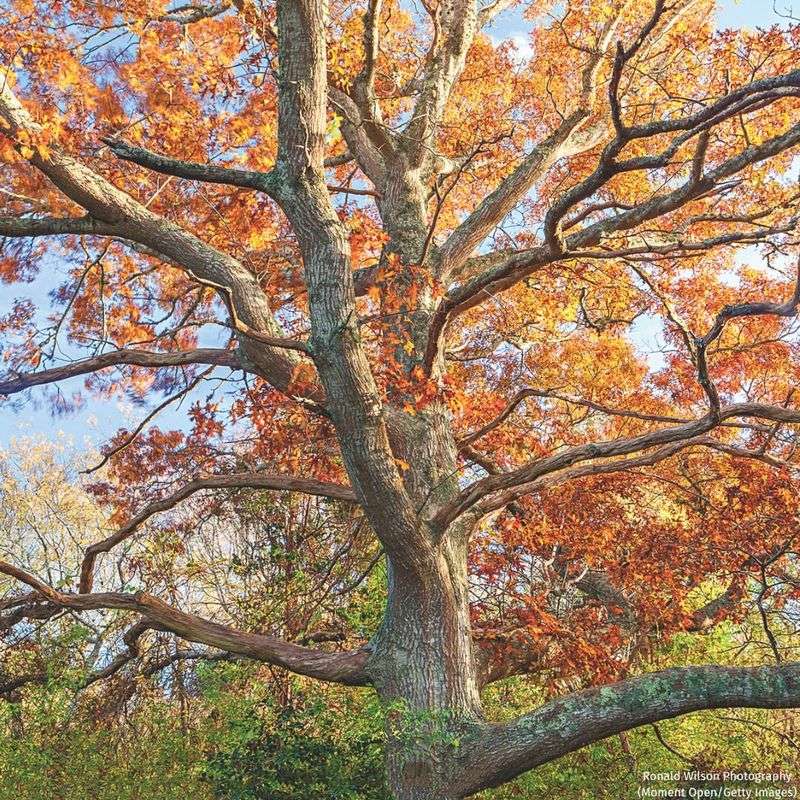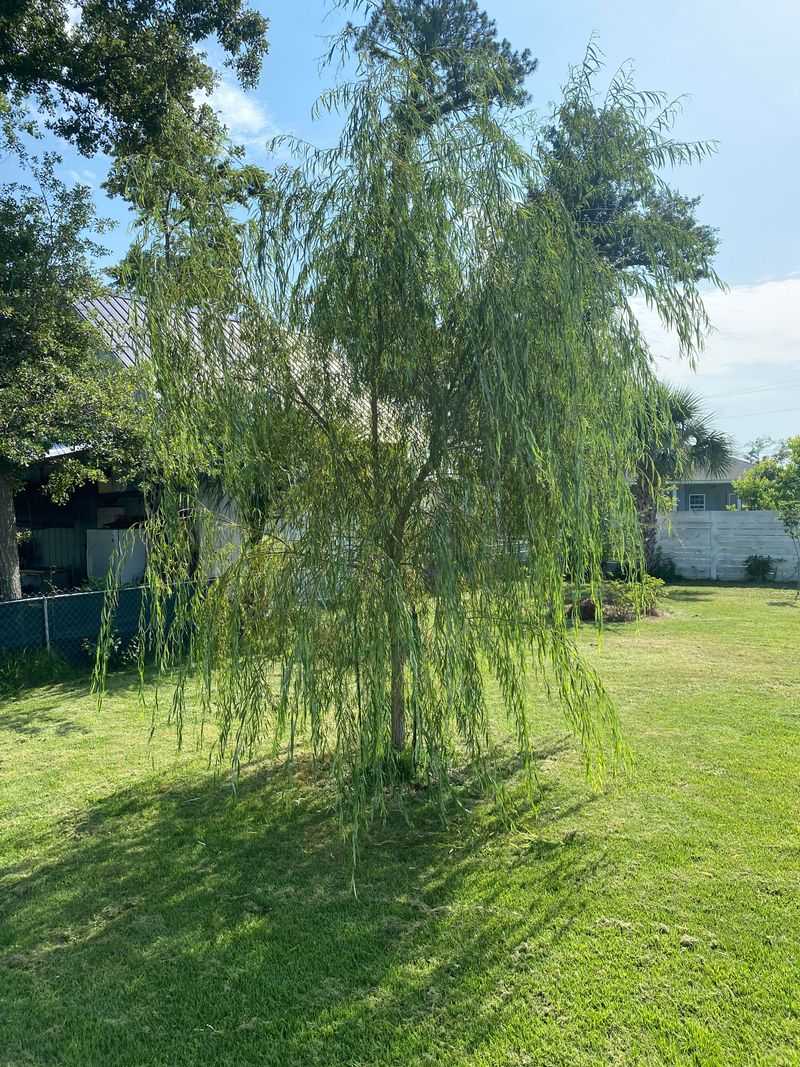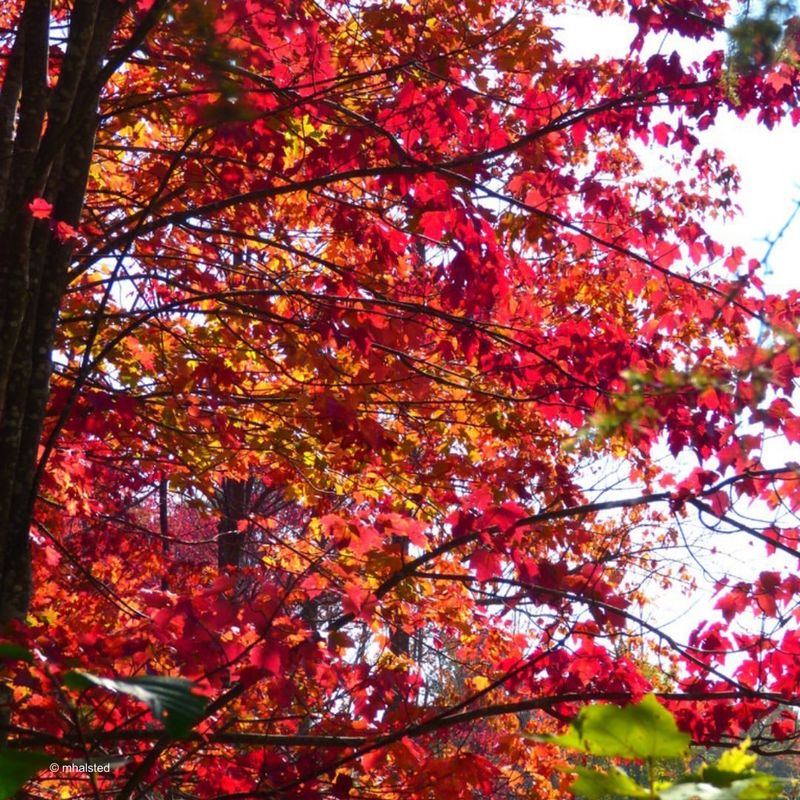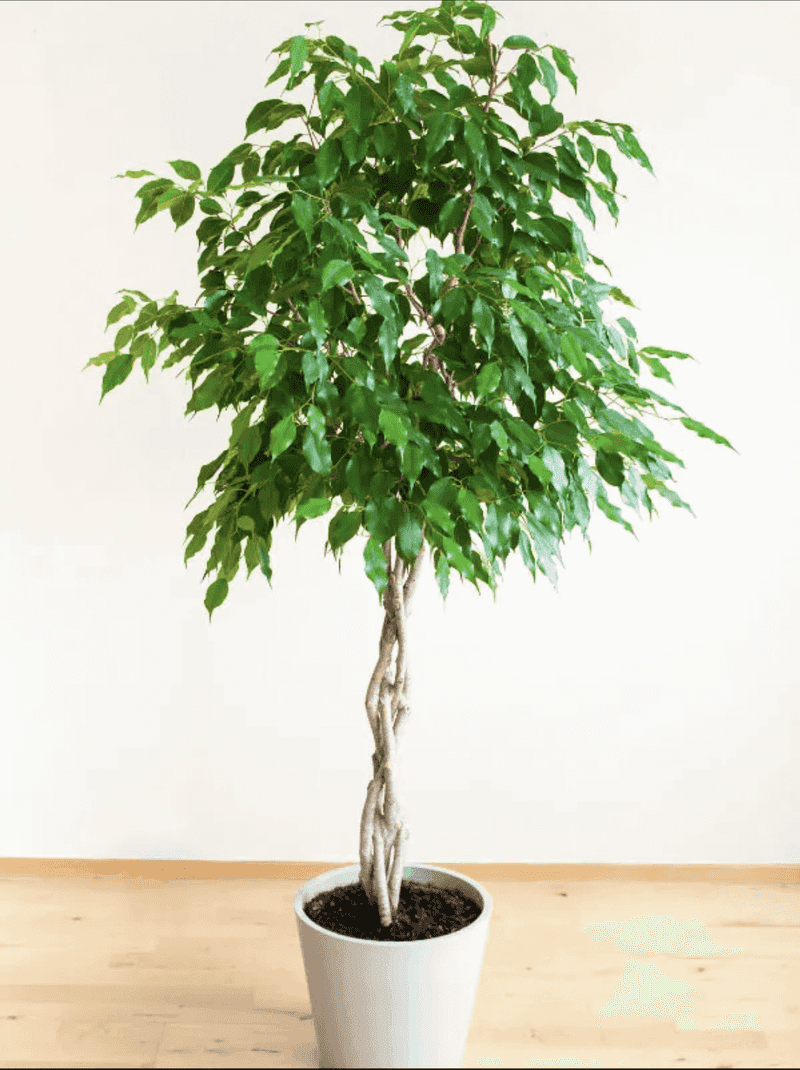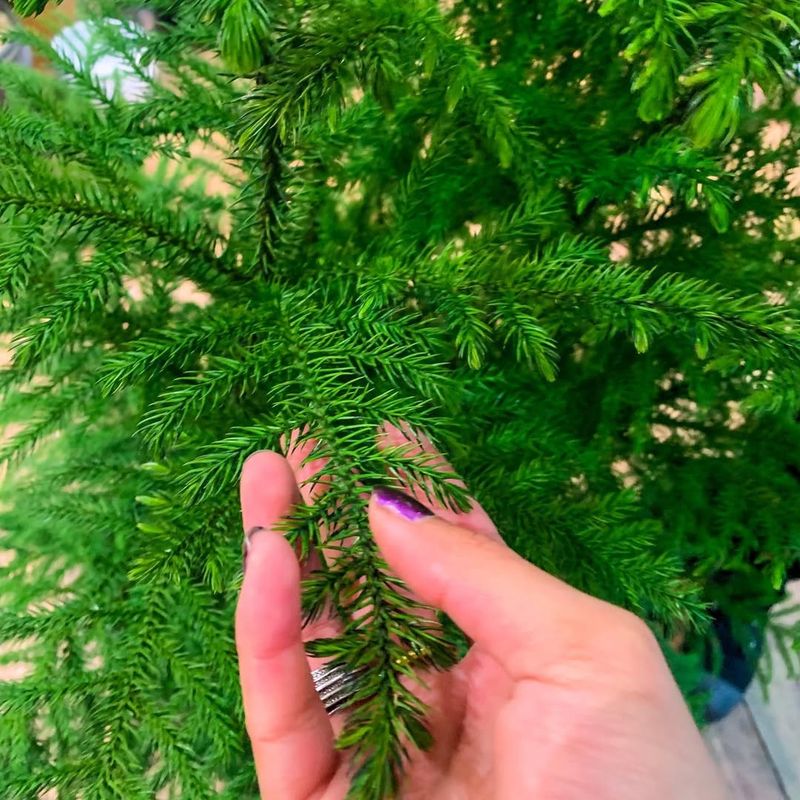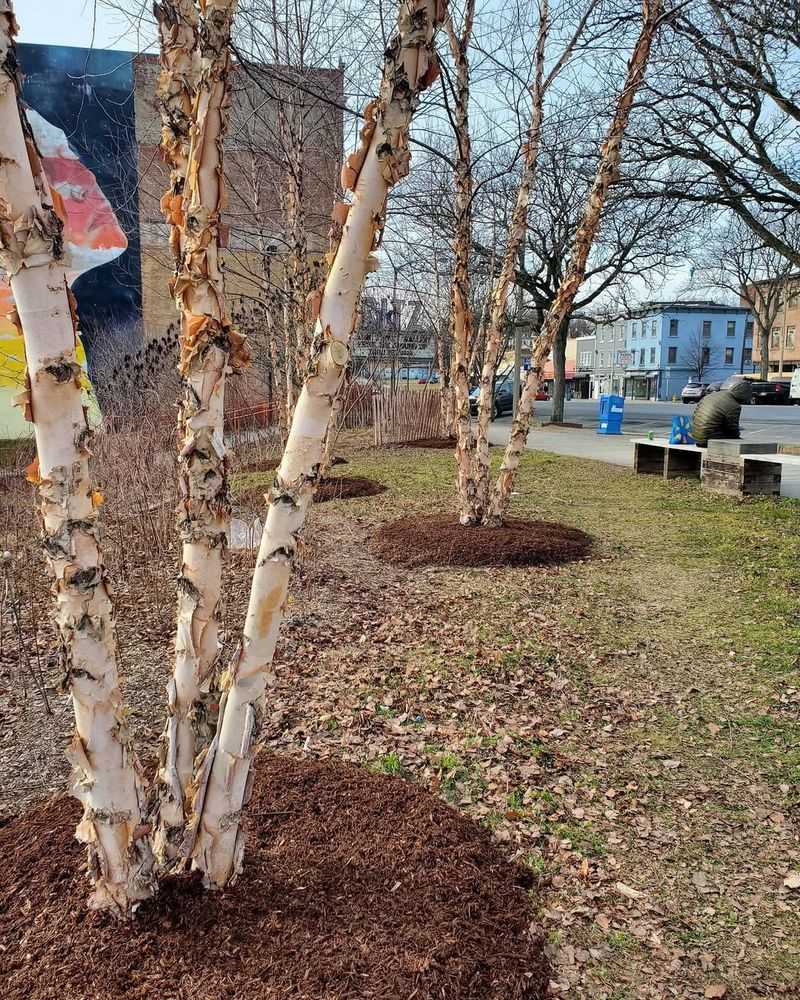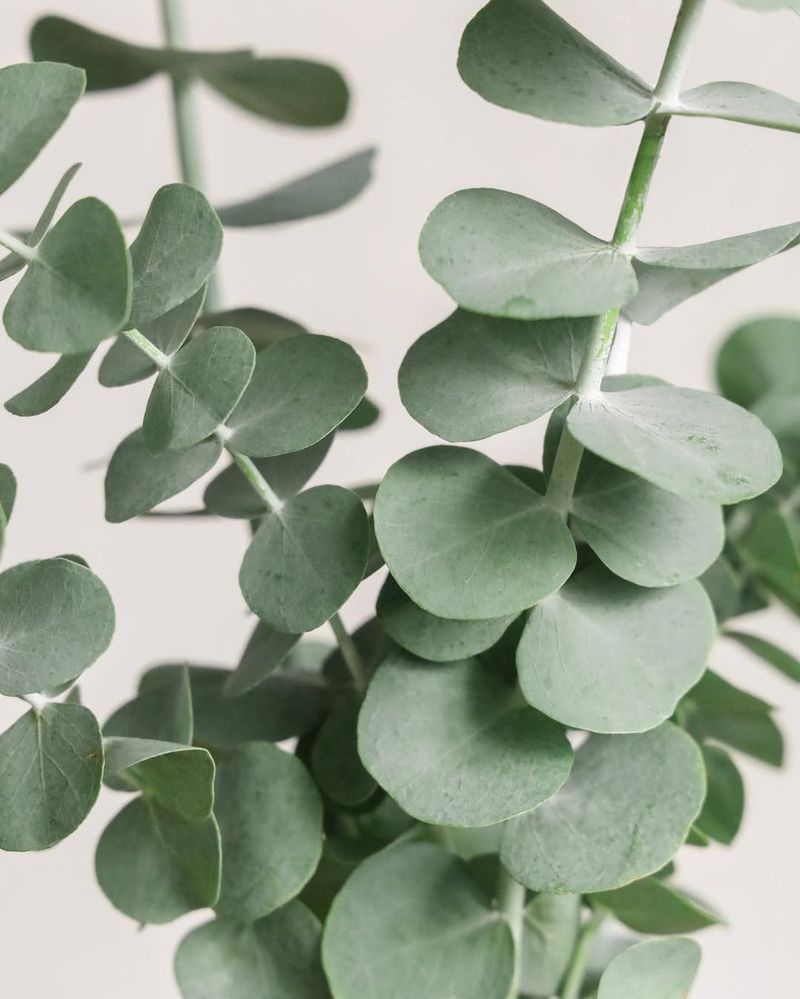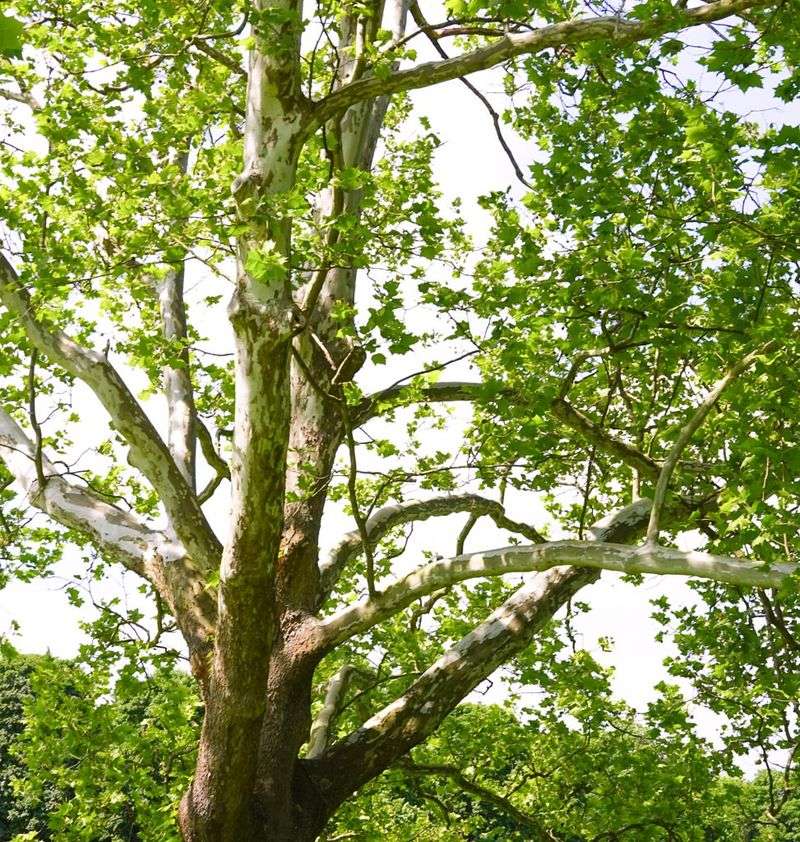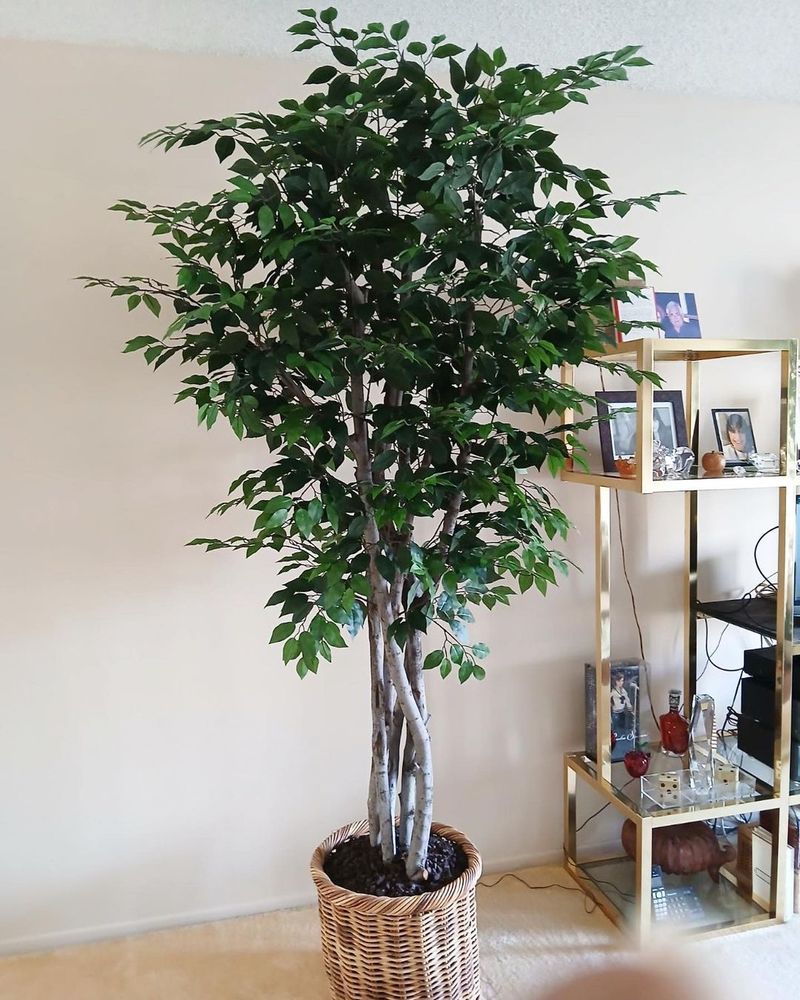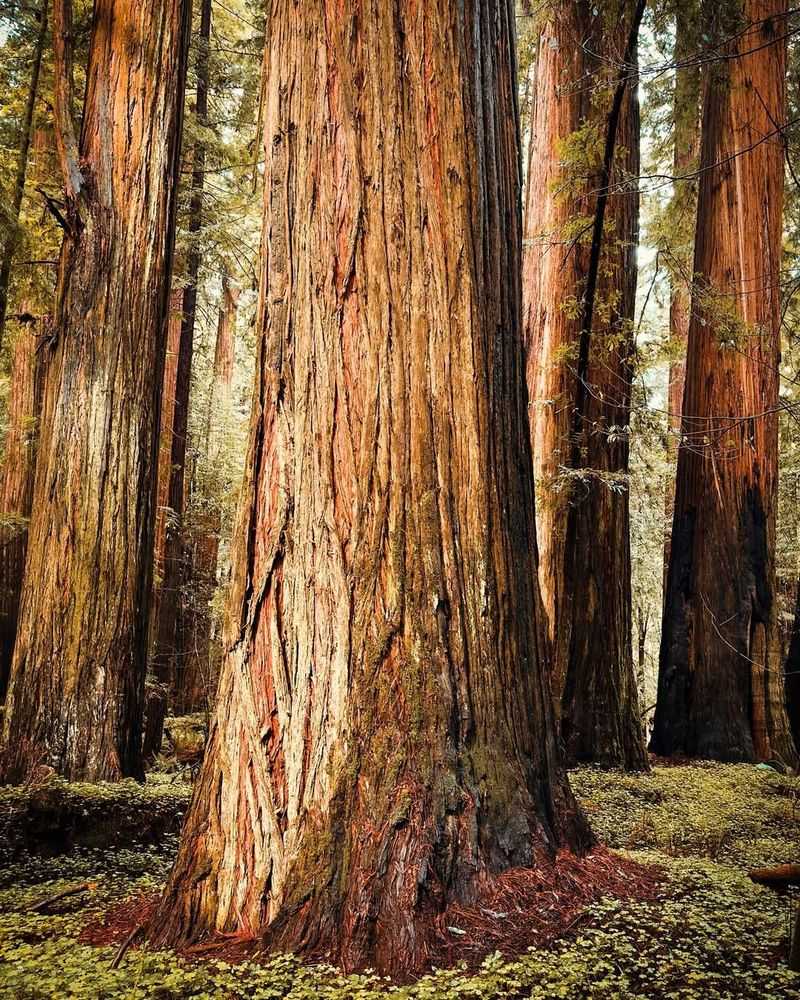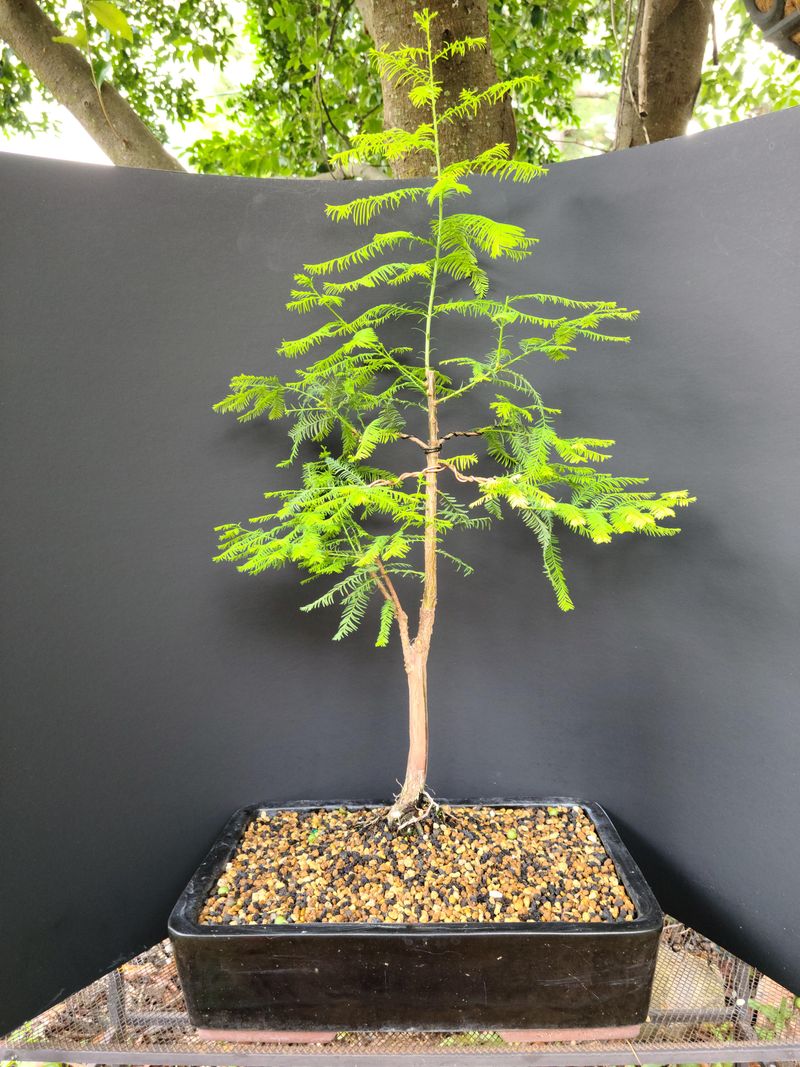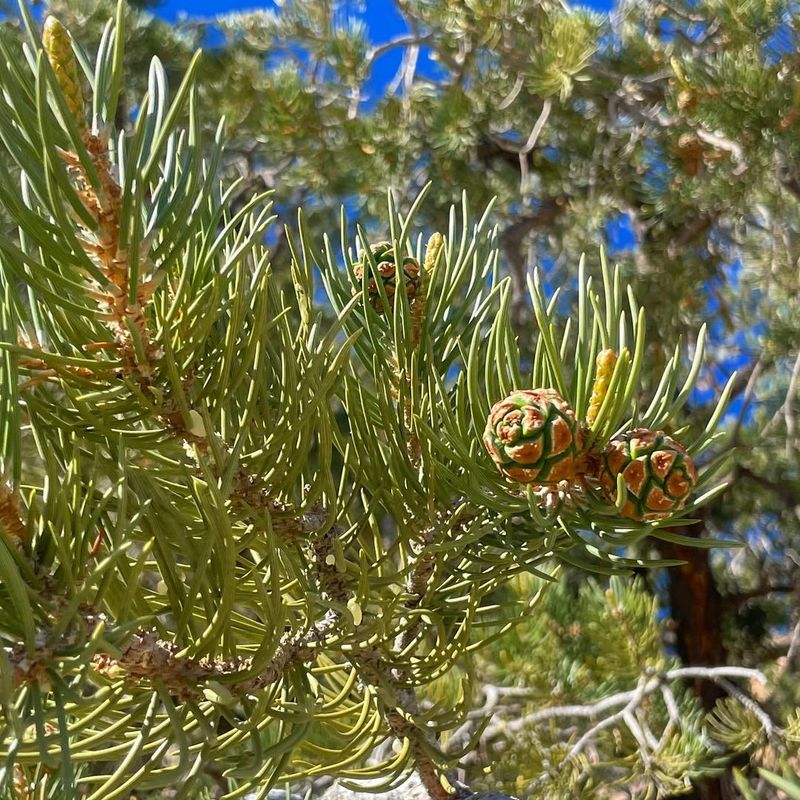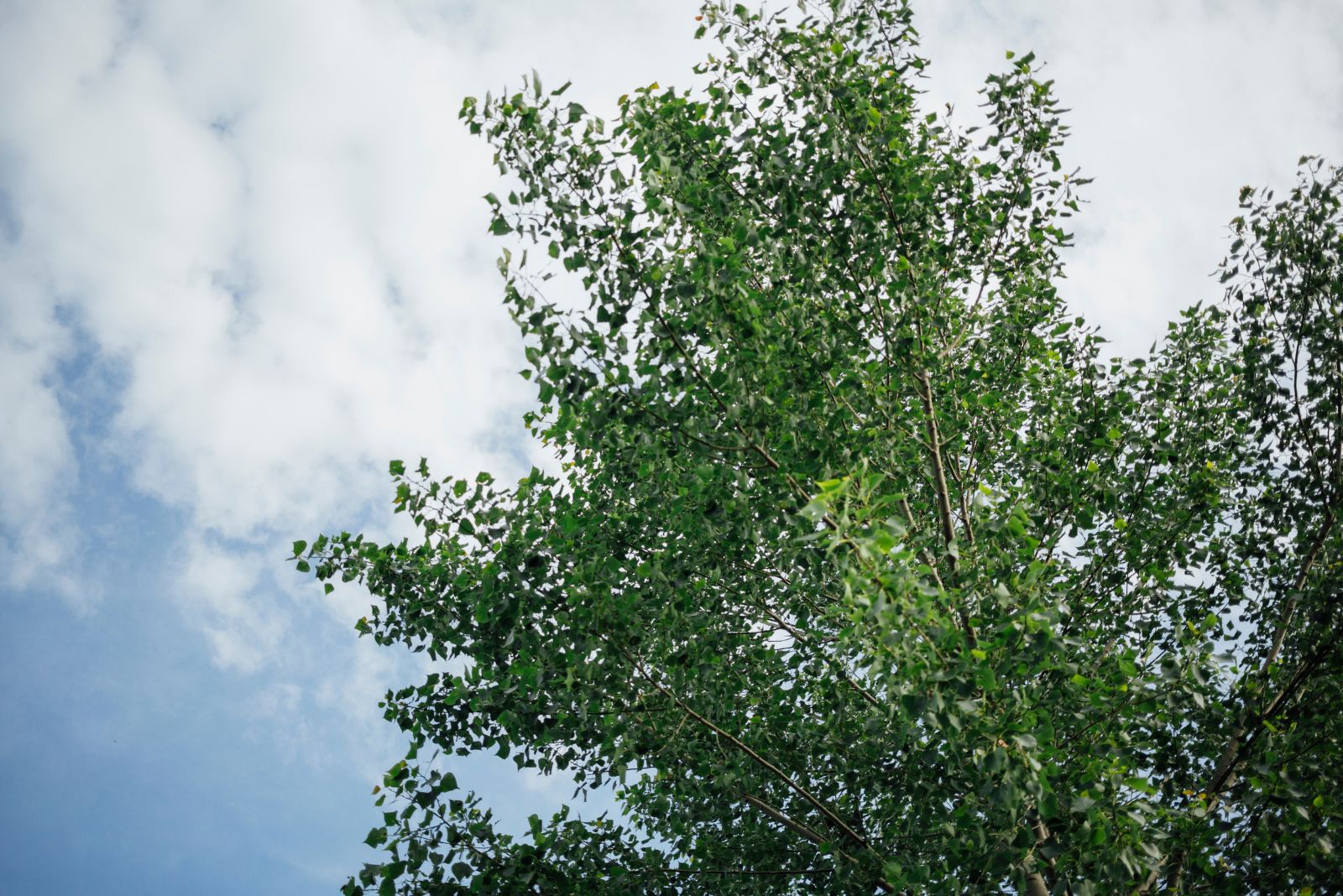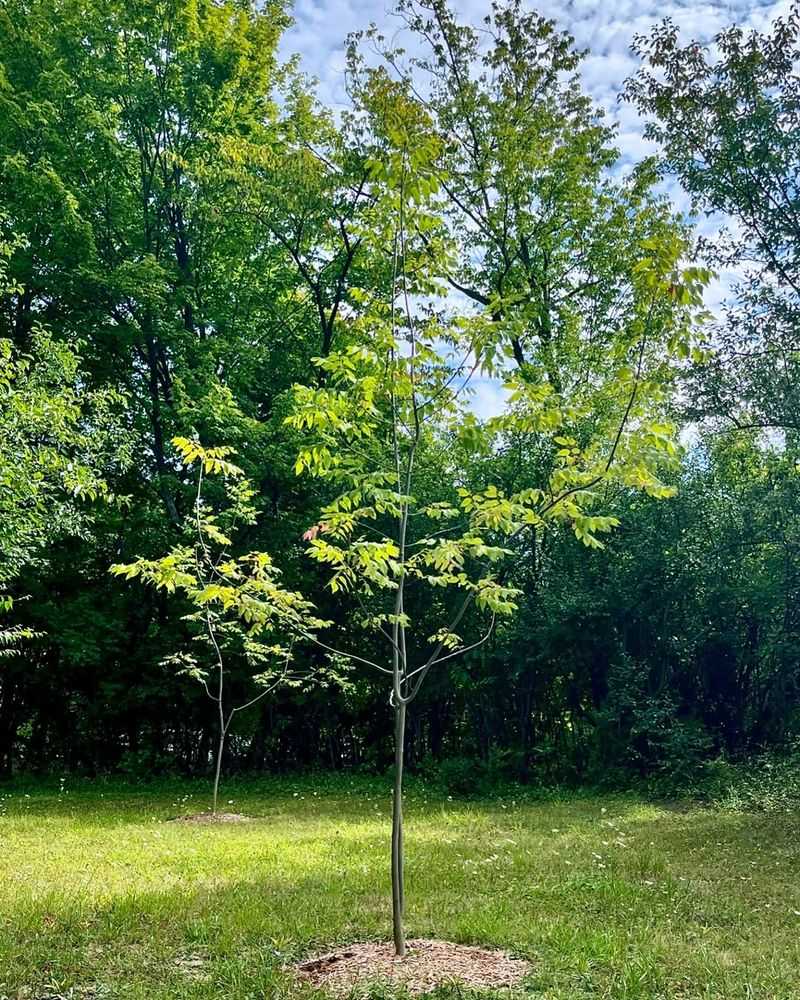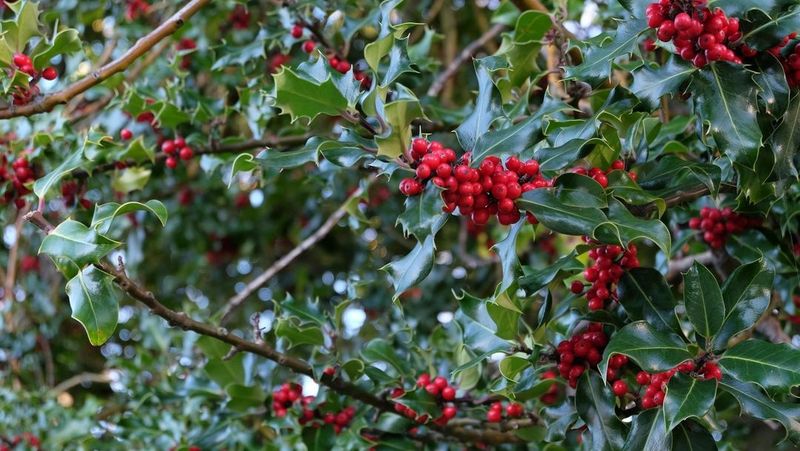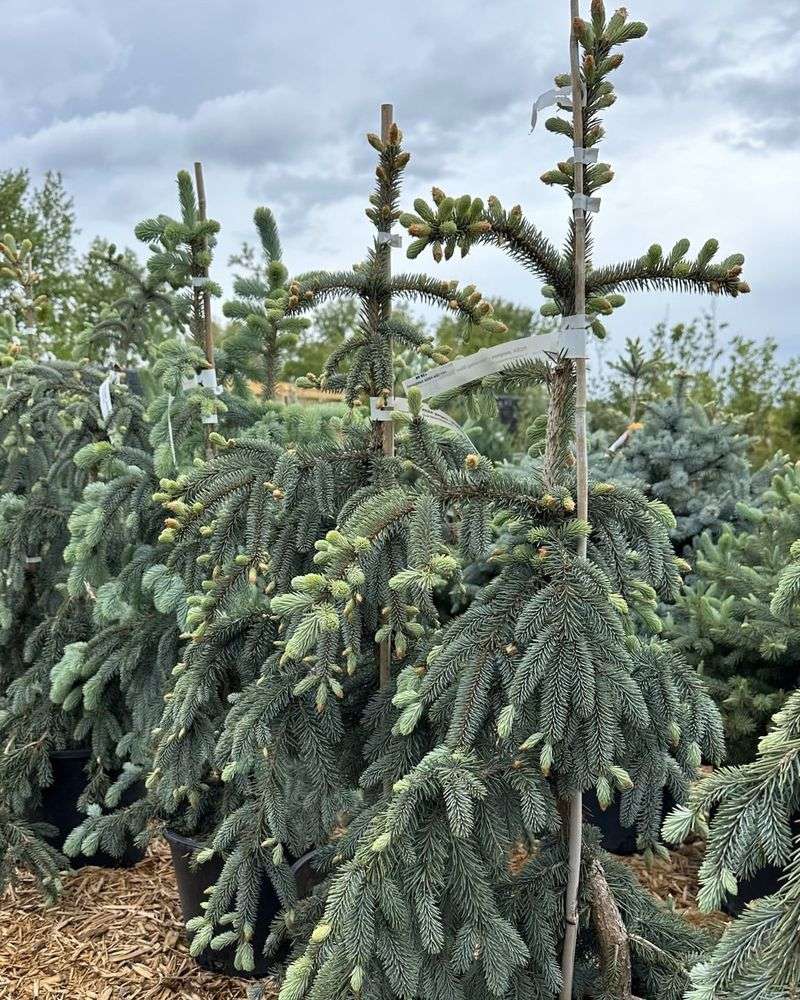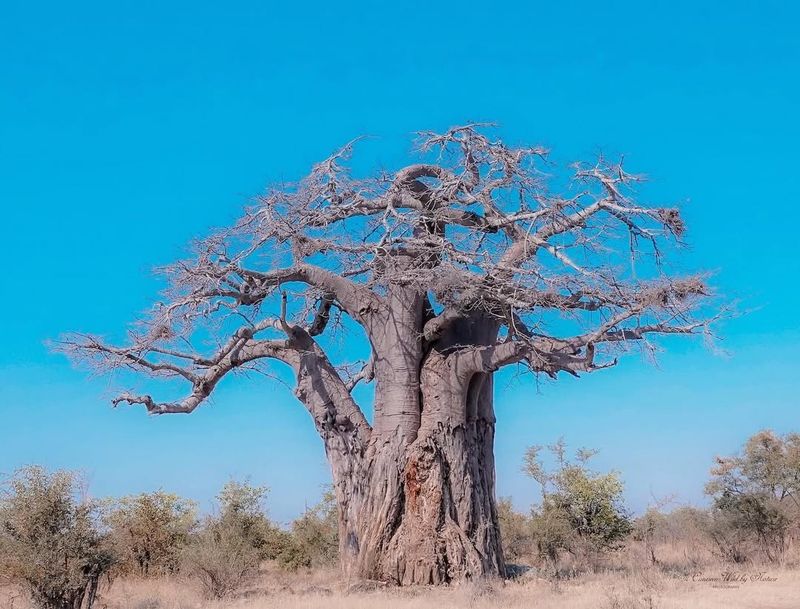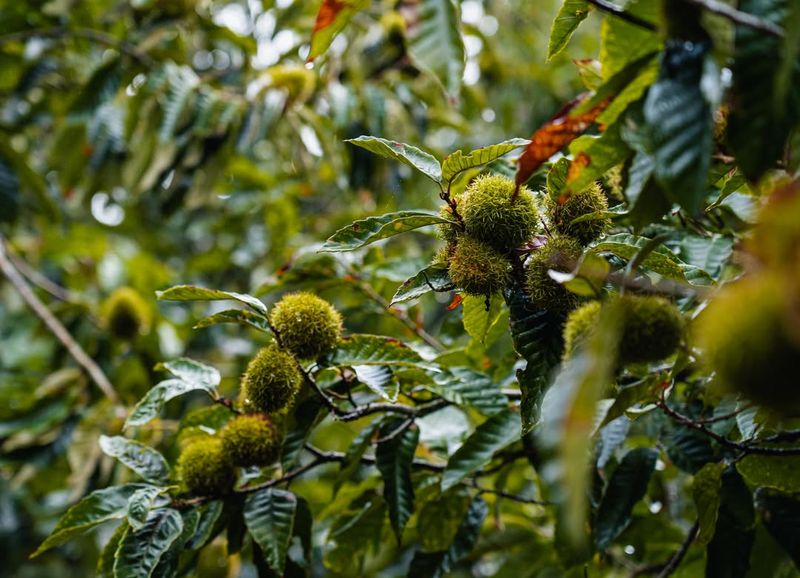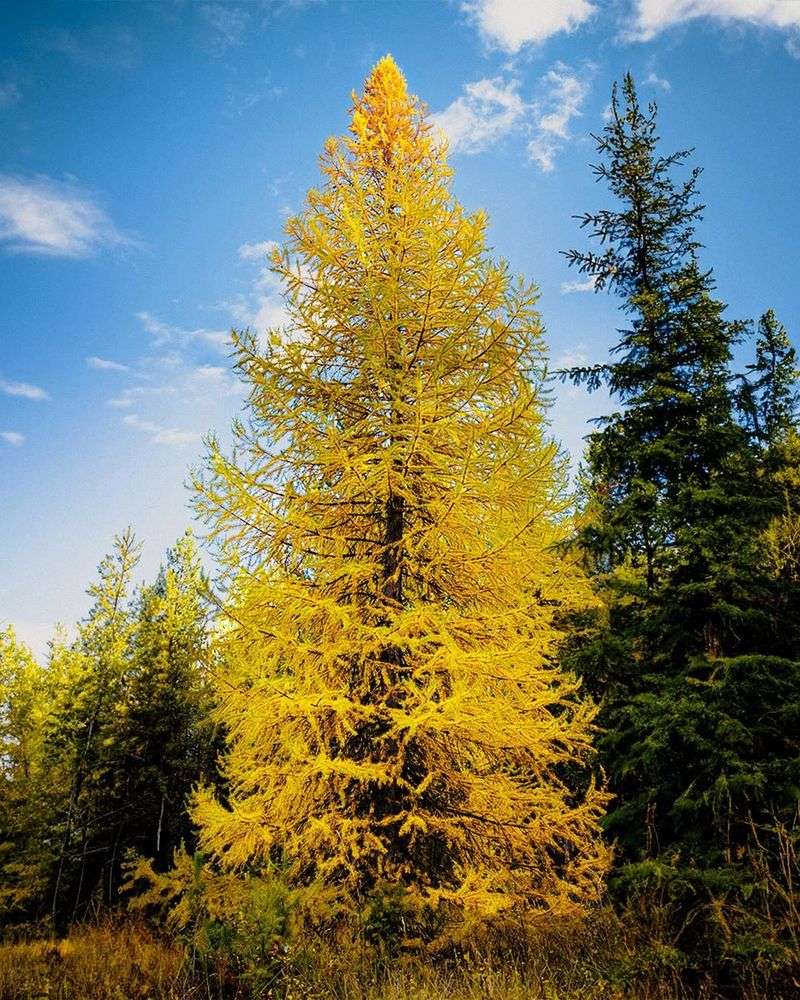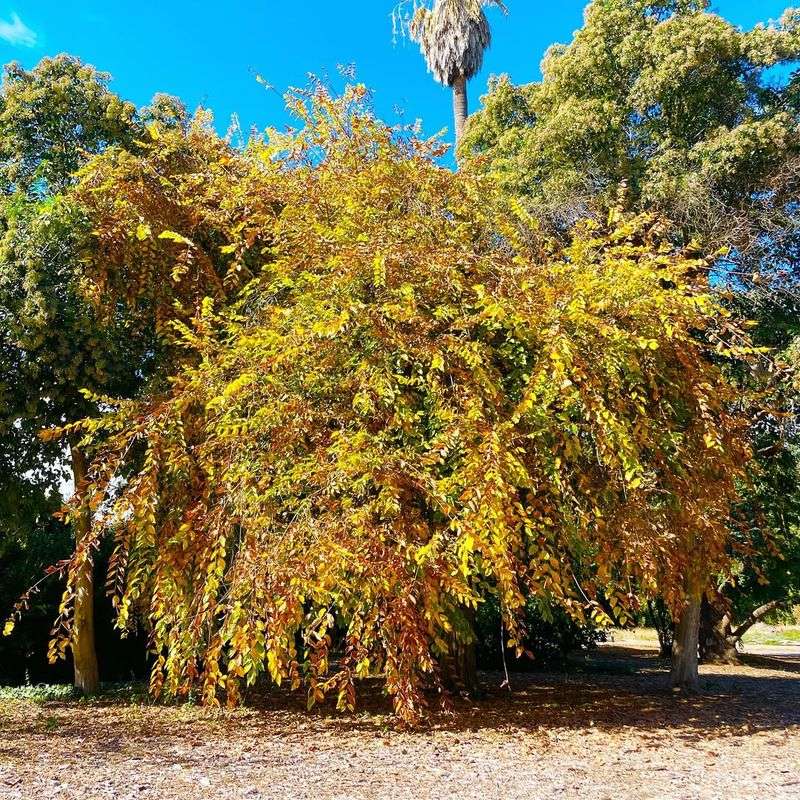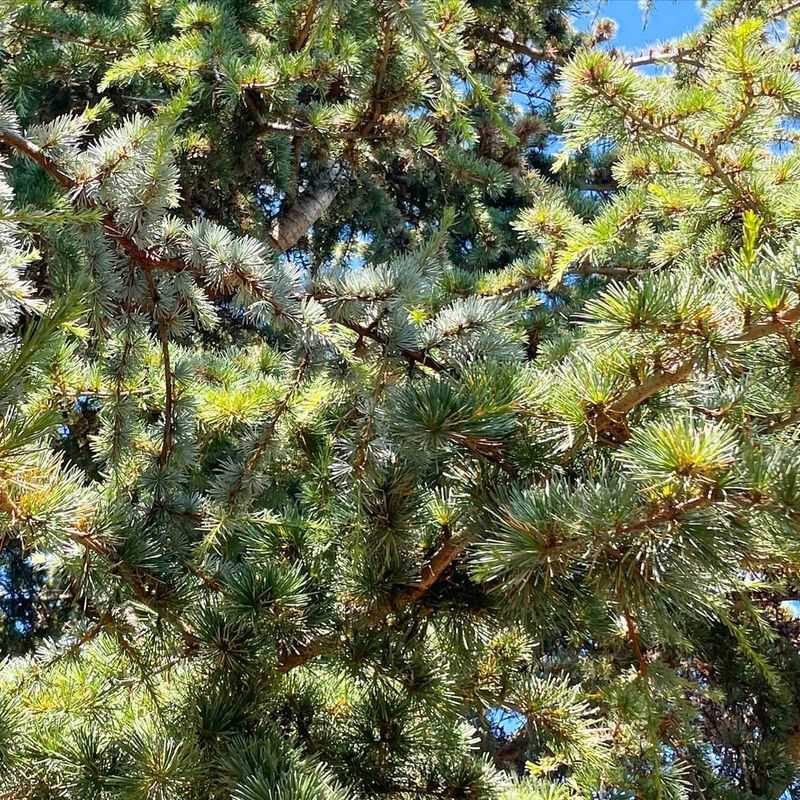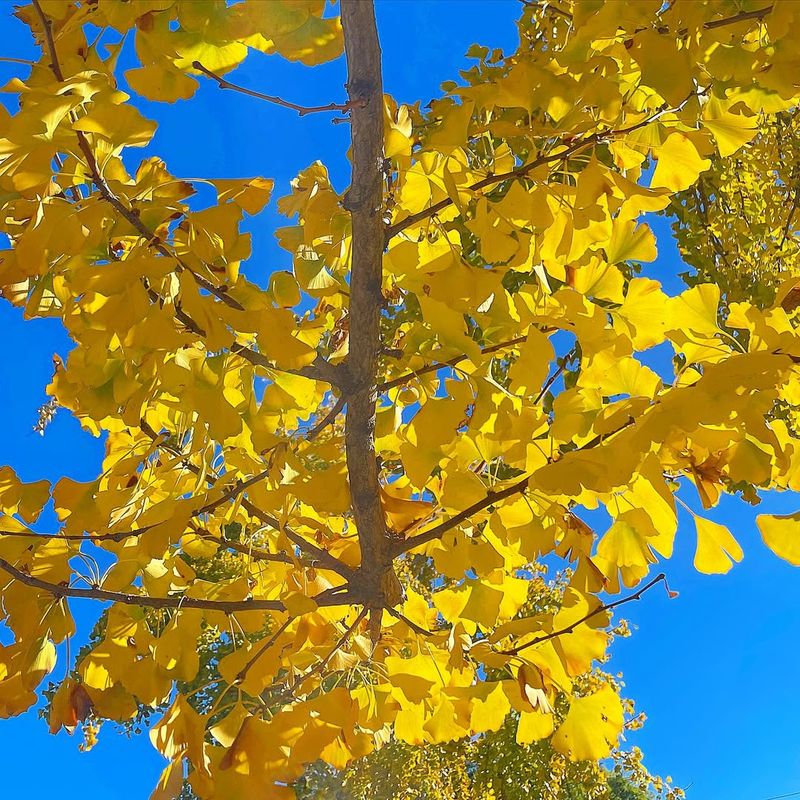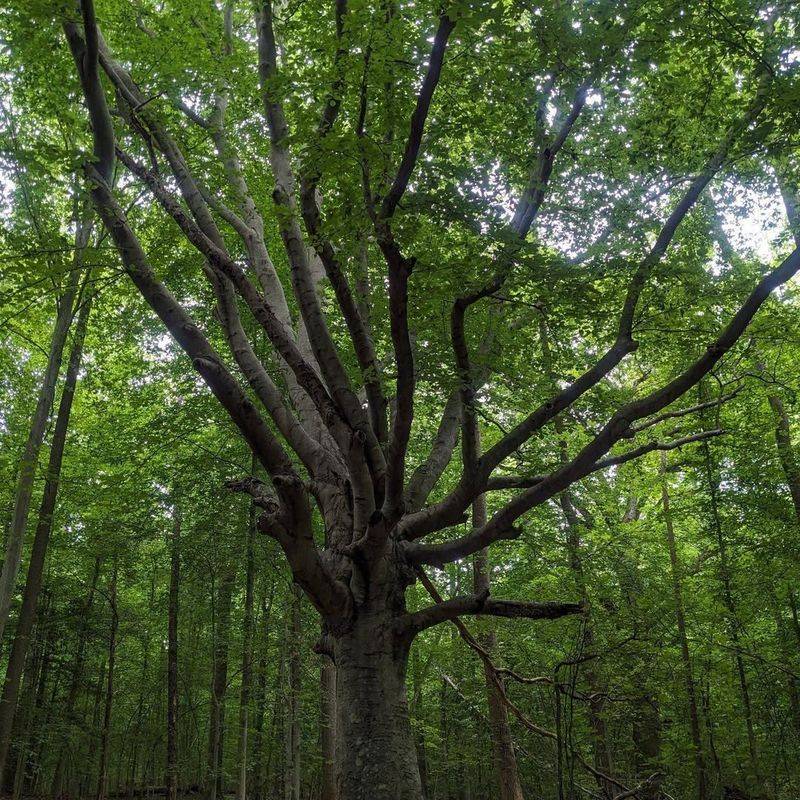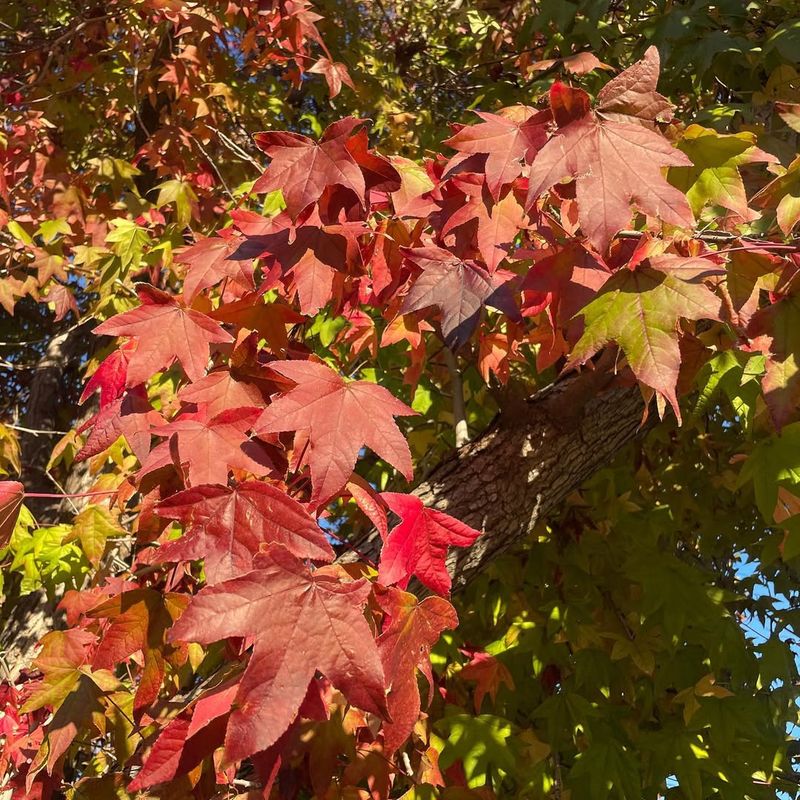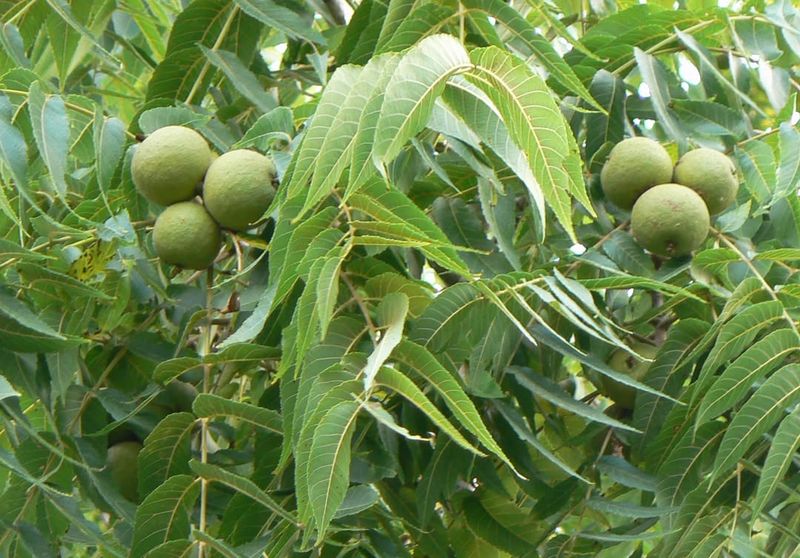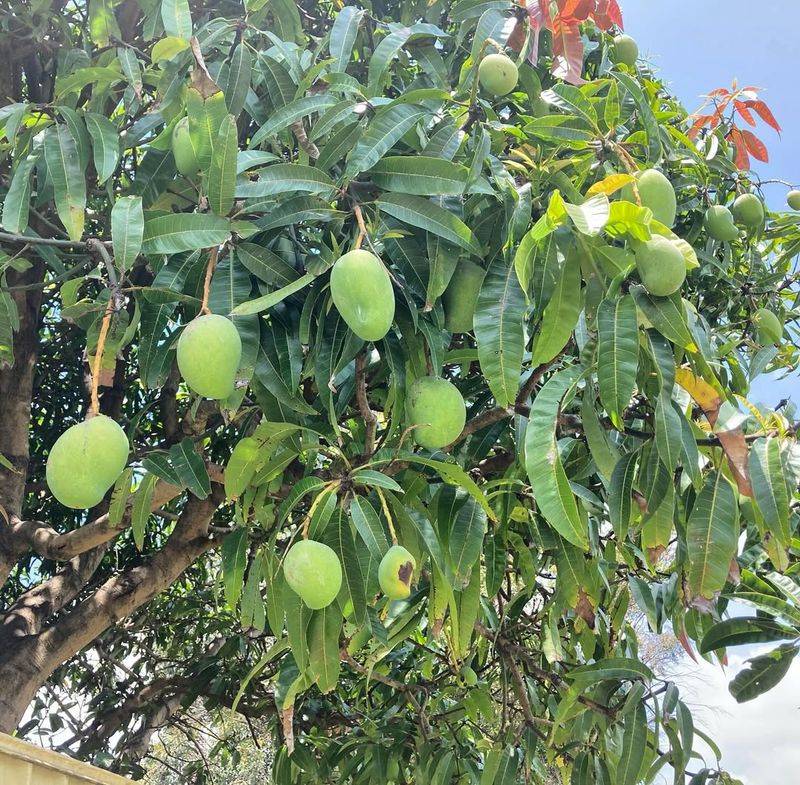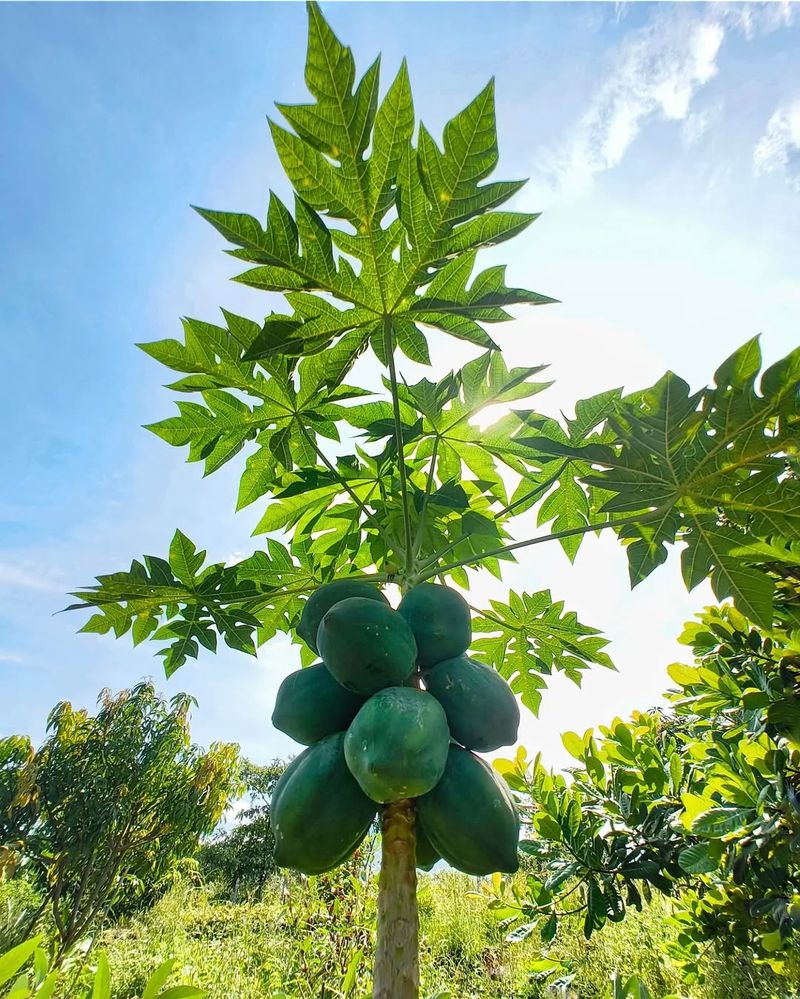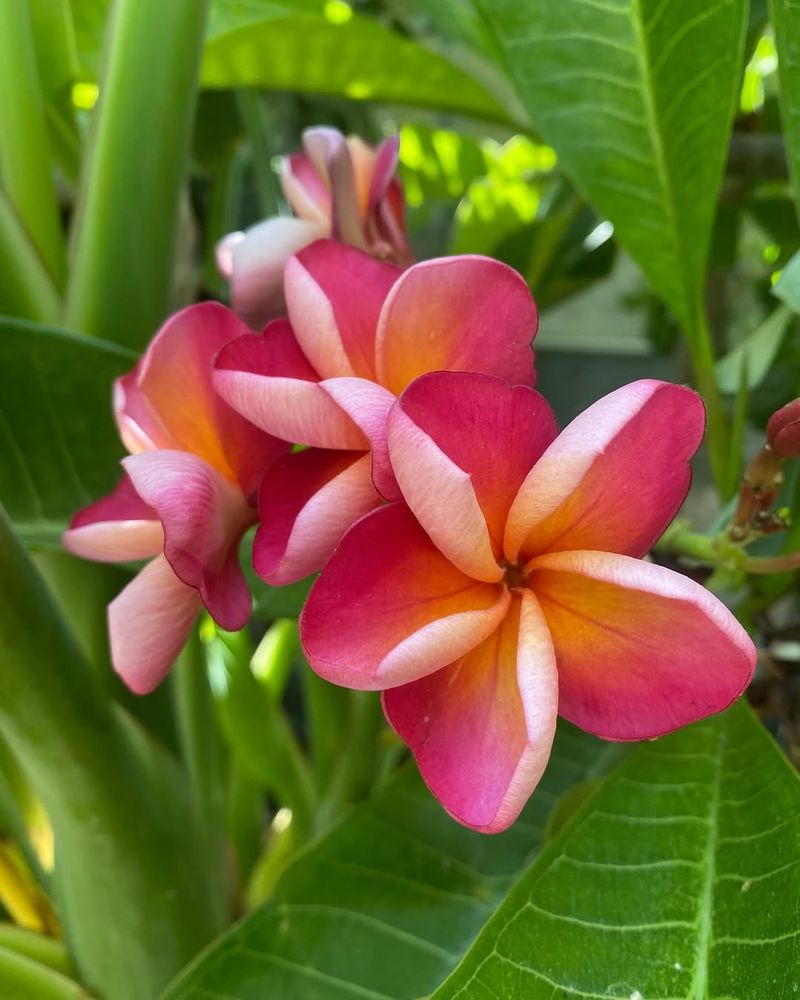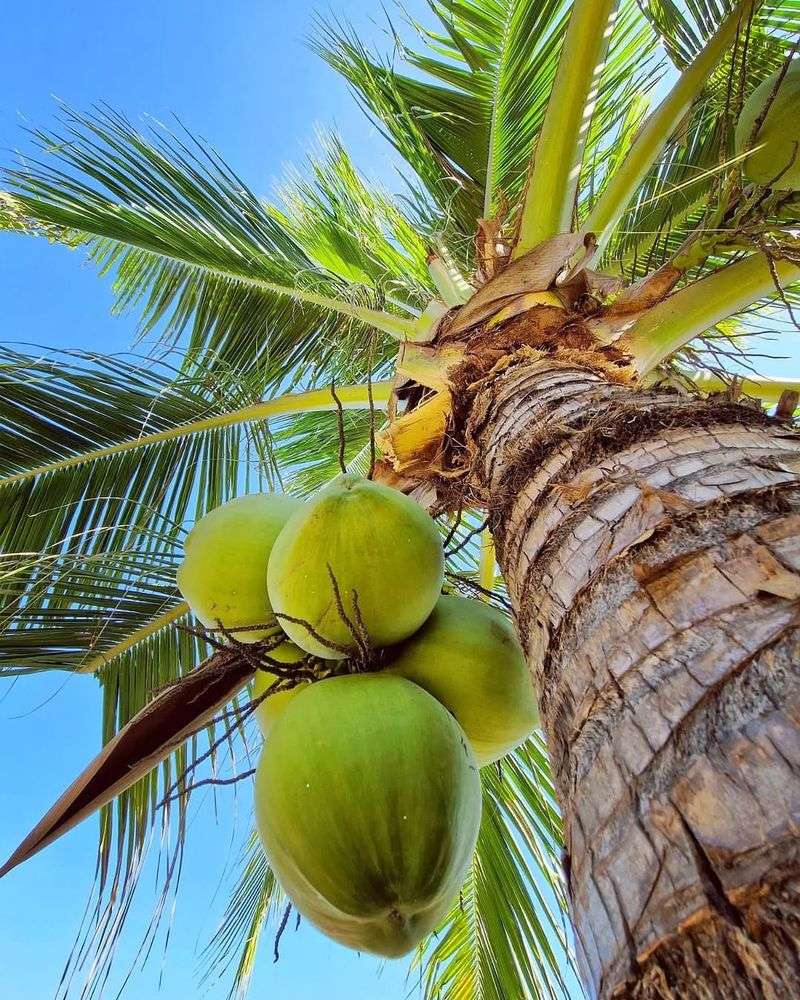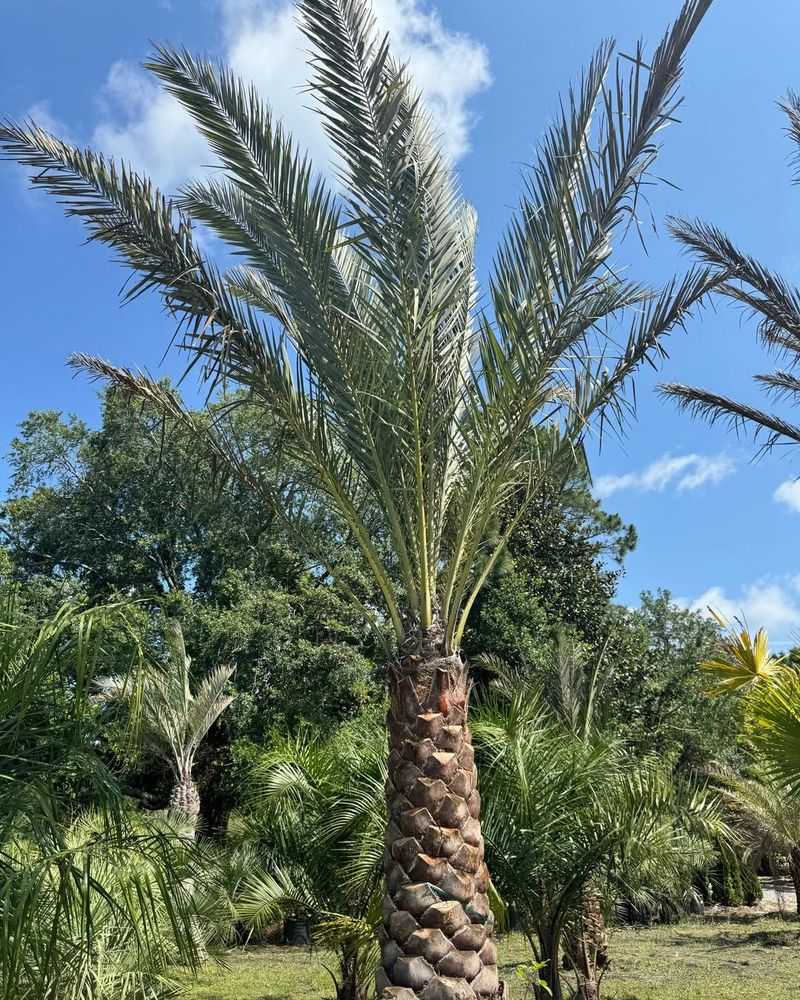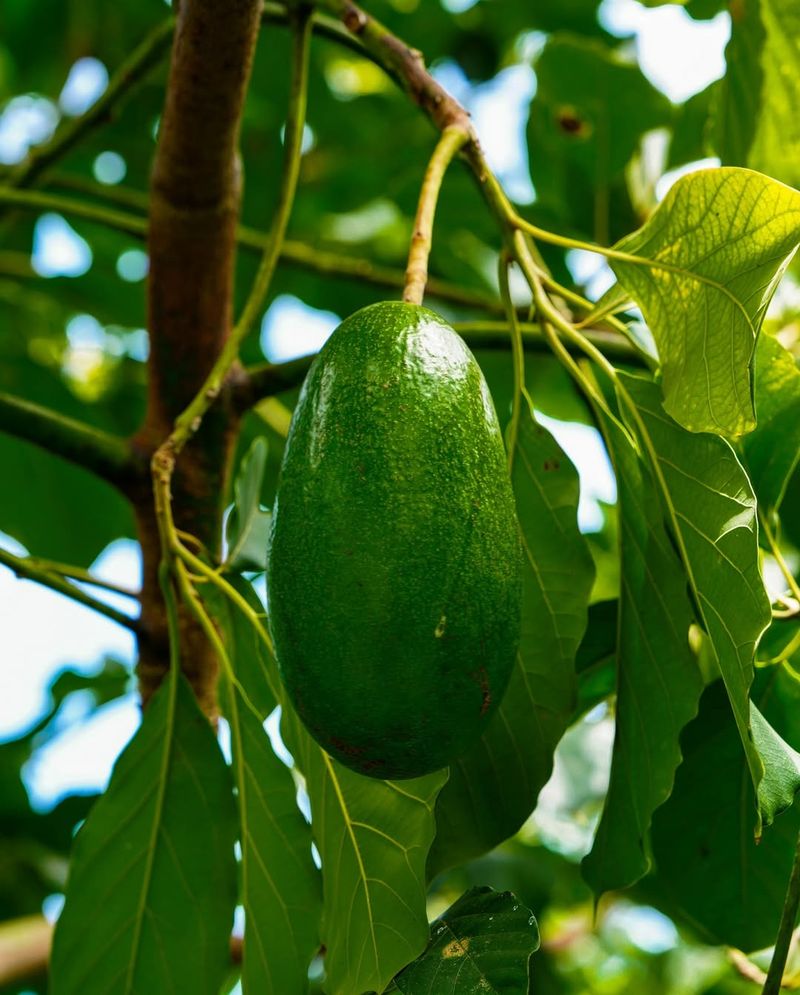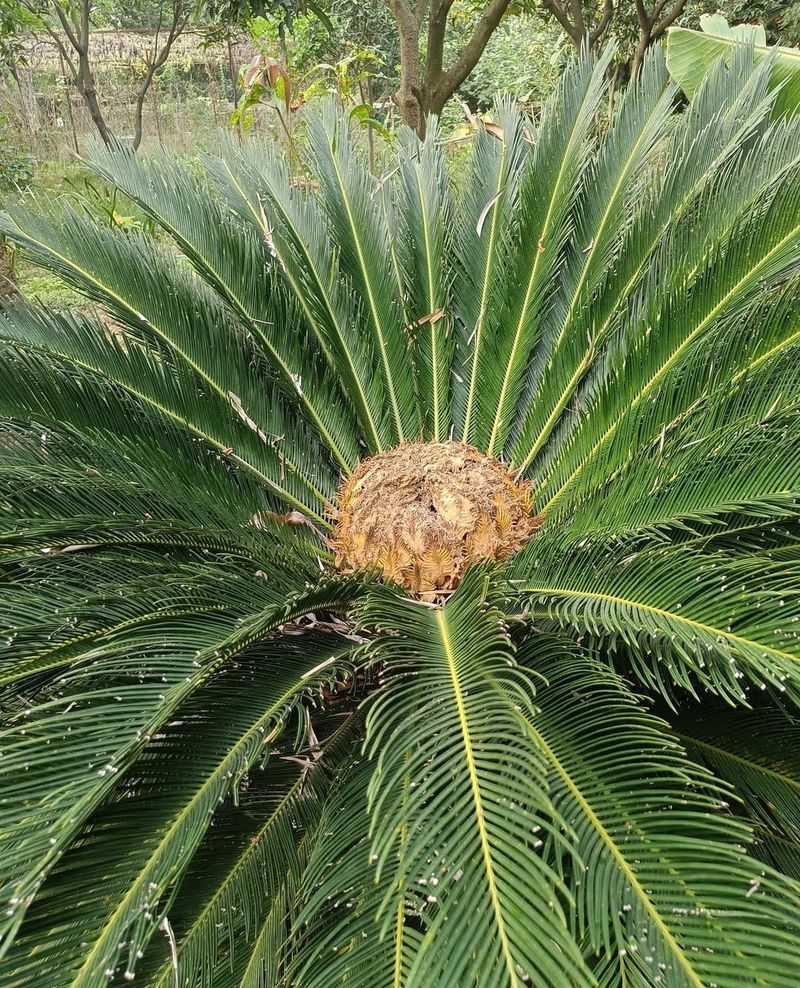Have you ever wondered why some plants, despite all the love and care, simply refuse to thrive in pots or raised planters? I certainly have, and after talking to some seasoned gardening experts, I discovered some surprising reasons.
Whether it’s the roots needing sprawling space or the plant craving specific soil types, certain plants just aren’t suited for container living. Here’s a fascinating list of 33 such plants you should think twice before potting, brought to you with expert insights.
1. Bamboo
The allure of bamboo’s swaying stalks often tempts gardeners. However, bamboo becomes problematic in pots due to its aggressive root system. Without ample space to sprawl, it can quickly become root-bound. This constriction stunts growth and leads to stress. Moreover, bamboo’s love for moisture means frequent watering, which potted environments struggle to provide consistently.
While it might seem manageable initially, keeping bamboo in pots can result in a maintenance nightmare. If you’re determined, opt for a dwarf variety, but remember, they too prefer the earth beneath them over confinements of a container.
2. Oak Trees
Mighty giants of the plant world, oaks are synonymous with strength and longevity. Unfortunately, these towering beauties require more than a pot can provide. Their extensive root systems delve deep into the earth, seeking nutrients and stability.
Confining an oak tree restricts this natural behavior, leading to poor growth and health. Further, the sheer size and weight of the tree can cause pots to tip over or crack. For those dreaming of nurturing an oak, a spacious garden plot or natural setting is the way to go for these majestic trees.
3. Willow Trees
Known for their graceful, flowing branches, willow trees captivate with their beauty. Yet, when it comes to pots, they prove unsuitable. Willows crave moisture, often found near water bodies, which potted conditions can seldom replicate.
Their roots spread extensively, seeking both water and nutrients, and a pot simply isn’t enough. If contained, their health dwindles, and they fail to achieve their characteristic grace. Gardeners wanting a willow should provide ample garden space and access to water to witness their true splendor.
4. Maple Trees
The vibrant colors of maple trees in fall attract many admirers. Nevertheless, these trees require more room than a pot can offer. Their roots spread wide and deep, and constraining them disrupts their natural growth.
This restriction not only hinders development but also impacts the tree’s overall health. Additionally, maples need specific soil conditions, difficult to maintain in a confined space. For those enchanted by a maple’s autumnal display, planting them in a spacious yard ensures they flourish brilliantly.
5. Weeping Fig
Cascading branches and lush greenery make the weeping fig a favorite among indoor gardeners. However, its beauty belies its demanding nature. Weeping figs have extensive root systems that crave space, making pots a tight squeeze. Without adequate room, they can become pot-bound, leading to stress and reduced vigor.
Furthermore, these figs are sensitive to environmental changes, which are more pronounced in potted conditions. If you’re set on keeping one indoors, choose a large container and ensure consistent care to mimic its natural habitat.
6. Norfolk Island Pine
Often fancied as indoor Christmas trees, Norfolk Island pines bring a touch of the tropics inside. Sadly, pots don’t meet their needs. These pines require good drainage and specific humidity levels, hard to achieve in containers.
Without these conditions, they become stressed, leading to browning needles and stunted growth. Additionally, their roots demand space to spread, and pots often fall short. If you’re aiming for a flourishing Norfolk, ample outdoor space and attentive care in a suitable climate are essential.
7. Birch Trees
With their iconic white bark and delicate leaves, birch trees grace many landscapes. Yet, pots are far from ideal for their growth. Birches develop vast root networks to gather nutrients and maintain stability, which containers simply can’t support.
Furthermore, they thrive in cooler climates and specific soil types, challenging to replicate in a pot. For those envisioning a birch’s beauty, a spacious outdoor area with suitable conditions helps them reach their full potential.
8. Eucalyptus
The aromatic scent and towering presence of eucalyptus make it a unique choice for gardens. Unfortunately, they aren’t viable for pot life. Eucalyptus trees grow rapidly, with extensive roots that seek deep earth, which pots can’t provide.
Moreover, they require specific soil conditions and ample sunlight, difficult to sustain indoors or in confined spaces. If you wish to enjoy eucalyptus, consider planting it in a garden where it can grow uninhibited by space constraints and thrive naturally.
9. Sycamore Trees
Sycamore trees, with their broad leaves and sturdy trunks, command attention in any landscape. However, their natural grandeur is curtailed in pots. Sycamores develop extensive root systems that delve deep for nutrients and water. This makes container life impractical as they quickly outgrow the space.
Additionally, they require consistent soil moisture and conditions hard to maintain in pots. For a thriving sycamore, ample outdoor space with suitable soil and climate ensures they grow to their majestic potential.
10. Ficus Trees
Ficus trees, adored for their lush foliage, often entice indoor gardeners. Nevertheless, pots prove restrictive for their natural growth. These trees develop extensive root systems that seek nutrients deep in the soil, challenging to accommodate in containers.
When confined, they risk becoming root-bound, leading to stress and diminished health. Additionally, they are sensitive to environmental changes more pronounced in pots. For a healthy ficus, outdoor planting in suitable climates allows their full splendor to unfold.
11. Redwood Trees
The sheer size and majesty of redwood trees inspire awe and wonder. Yet, pots are ill-suited for these giants. Redwoods develop extensive root systems that require vast space to anchor their towering heights. Confined, they become stressed, leading to poor growth and health.
Moreover, they demand specific soil and climatic conditions, difficult to achieve in containers. If you’re dreaming of nurturing a redwood, ensure ample space and the right environment for these magnificent trees to thrive.
12. Cypress Trees
Cypress trees, with their stately form, add elegance to any landscape. However, pots fail to accommodate their needs. These trees develop extensive root networks that seek stability and nutrients, which containers can’t provide.
Furthermore, they thrive in specific soil and moisture conditions challenging to replicate in pots. If you’re captivated by cypress beauty, choose a spacious outdoor setting with suitable conditions for them to flourish naturally.
13. Pine Trees
The evergreen charm of pine trees beckons many gardeners. Unfortunately, these trees aren’t suitable for pots. Pine trees develop extensive root systems that delve deep into the earth, seeking nutrients and stability. Confining them in containers leads to root-bound issues and stunted growth.
Additionally, they require specific soil and moisture conditions, difficult to maintain in pots. For those dreaming of a pine tree, ample garden space and the right environmental conditions ensure they thrive.
14. Poplar Trees
With their fluttering leaves and towering presence, poplar trees captivate any landscape. However, they are ill-suited for pot life. Poplars develop extensive root systems that seek nutrients and stability in the soil, impossible to accommodate in containers.
When restricted, they risk becoming root-bound, leading to stress and reduced growth. Additionally, they thrive in specific soil and moisture conditions challenging to maintain in pots. For flourishing poplars, outdoor planting in a suitable climate ensures their full potential.
15. Ash Trees
Ash trees, known for their robust form and dense foliage, require more than a pot can offer. Their extensive root systems delve deep into the soil, seeking nutrients and stability, which containers can’t provide. When confined, they become stressed and struggle to grow properly.
Additionally, they need specific soil and moisture conditions, difficult to replicate in pots. For a thriving ash tree, ample outdoor space with suitable conditions allows them to flourish naturally.
16. Holly Trees
The festive allure of holly trees, with their vibrant berries, often tempts gardeners. Yet, pots fall short for their needs. Holly trees develop root systems that require space to spread and gather nutrients. Confining them in containers leads to root-bound issues and stunted growth.
Additionally, they thrive in specific soil and moisture conditions, challenging to maintain in pots. For those cherishing holly’s beauty, planting them outdoors in a suitable environment ensures they flourish.
17. Spruce Trees
Spruce trees, with their majestic form, add elegance to any winter landscape. However, pots don’t meet their needs. These trees develop extensive root systems that seek nutrients and stability, which containers can’t provide. When confined, they become stressed and struggle to grow properly.
Additionally, they require specific soil and moisture conditions, difficult to maintain in pots. For those dreaming of a spruce, ample outdoor space with suitable conditions ensures they thrive naturally.
18. Baobab Trees
The iconic silhouette of a baobab tree stands as a testament to nature’s wonder. Sadly, pots are unsuitable for these giants. Baobabs develop extensive root systems that seek deep soil for nutrients and stability. Confining them in containers leads to root-bound issues and stunted growth.
Additionally, they require specific soil and climatic conditions, difficult to replicate in pots. For those captivated by their grandeur, planting baobabs in a suitable outdoor environment ensures their flourishing.
19. Chestnut Trees
The sprawling form and nut-bearing capability of chestnut trees make them a unique garden choice. However, pots prove inadequate for their needs. Chestnuts develop extensive root systems that seek nutrients and stability in the soil, impossible to accommodate in containers.
When confined, they risk becoming root-bound, leading to stress and reduced growth. Additionally, they require specific soil and moisture conditions, challenging to maintain in pots. For flourishing chestnuts, outdoor planting in a suitable climate allows their full potential.
20. Larch Trees
Larch trees, with their seasonal beauty, captivate any landscape they grace. Yet, pots are a poor choice for these trees. Larches develop extensive root systems that seek nutrients and stability, which containers can’t provide. When confined, they become stressed and struggle to grow properly.
Additionally, they require specific soil and moisture conditions, difficult to maintain in pots. For those hoping to enjoy a larch’s changing colors, outdoor planting ensures thriving growth in a suitable environment.
21. Elm Trees
The stately presence of elm trees commands attention wherever they stand. However, pots fail to support their needs. Elms develop extensive root systems that delve deep into the soil for nutrients and stability, which containers can’t provide.
When confined, they become stressed and struggle to maintain health. Additionally, they require specific soil and moisture conditions, difficult to replicate in pots. For a flourishing elm, ample garden space with the right conditions ensures they grow majestically.
22. Cedar Trees
Cedar trees, with their towering height and fragrant wood, enchant many nature lovers. Unfortunately, pots are unsuitable for their growth. Cedars develop extensive root networks that require space for nutrients and stability, impossible to achieve in containers.
When confined, they risk becoming root-bound, leading to stress and stunted growth. Additionally, they thrive in specific soil and moisture conditions, challenging to maintain in pots. For flourishing cedars, outdoor planting with suitable environmental conditions is essential.
23. Ginkgo Trees
The ancient allure of ginkgo trees, with their fan-shaped leaves, draws admiration from many. Yet, pots prove restrictive for their needs. Ginkgos develop extensive root systems that delve deep into the soil for stability and nutrients, difficult to accommodate in containers.
When confined, they become stressed and struggle to maintain health. Additionally, they require specific soil and moisture conditions, challenging to replicate in pots. For a thriving ginkgo, outdoor planting ensures their full potential blooms.
24. Beech Trees
The regal form and smooth bark of beech trees create a tranquil landscape. However, pots are inadequate for their growth. Beeches develop extensive root systems that seek nutrients and stability in the soil, impossible to accommodate in containers.
When confined, they risk becoming root-bound, leading to stress and reduced growth. Additionally, they require specific soil and moisture conditions, challenging to maintain in pots. For flourishing beeches, outdoor planting in a suitable environment allows their full splendor.
25. Sweetgum Trees
The vibrant autumn display of sweetgum trees brings festive beauty to any garden. Yet, pots are unsuitable for their needs. Sweetgums develop extensive root systems that delve deep into the soil for nutrients and stability, difficult to accommodate in containers.
When confined, they become stressed and struggle to grow properly. Additionally, they require specific soil and moisture conditions, challenging to maintain in pots. For those hoping to enjoy their vibrant display, ample garden space with the right conditions ensures thriving growth.
26. Walnut Trees
The robust form and valuable nuts of walnut trees make them a desirable choice for many gardeners. However, pots prove inadequate for their needs. Walnuts develop extensive root systems that seek deep soil for stability and nutrients, impossible to accommodate in containers.
When confined, they risk becoming root-bound, leading to stress and reduced growth. Additionally, they require specific soil and moisture conditions, challenging to maintain in pots. For flourishing walnuts, outdoor planting in a suitable climate allows their full potential.
27. Mango Trees
The tropical allure and delicious fruits of mango trees captivate many gardeners. Sadly, pots fall short for their growth needs. Mangoes develop extensive root systems that require spacious soil for stability and nutrients, difficult to achieve in containers.
When confined, they become stressed, leading to reduced fruit production. Additionally, they thrive in specific soil and climatic conditions, challenging to maintain in pots. For those dreaming of a lush mango harvest, outdoor planting in a suitable climate is essential.
28. Papaya Trees
With their vibrant fruits and tropical charm, papaya trees add a splash of color to any garden. However, pots don’t meet their needs. Papayas develop extensive root systems that require spacious soil for nutrients and stability, impossible to accommodate in containers.
When confined, they become stressed and struggle to produce fruit. Additionally, they require specific soil and climatic conditions, challenging to replicate in pots. For flourishing papayas, outdoor planting in a suitable tropical climate is essential.
29. Plumeria
The fragrant blooms of plumeria transport one to a tropical paradise. Yet, pots fall short for their needs. Plumerias develop extensive root systems that require spacious soil for nutrients and stability, difficult to achieve in containers.
When confined, they become stressed and struggle to maintain healthy blooms. Additionally, they require specific soil and climatic conditions, challenging to maintain in pots. Those captivated by plumeria’s beauty should consider outdoor planting in a suitable climate for thriving growth.
30. Coconut Palm
The iconic silhouette of coconut palms evokes images of serene beaches. Unfortunately, pots don’t meet their needs. Coconut palms develop extensive root systems that require spacious soil for stability and nutrients, difficult to achieve in containers.
When confined, they become stressed and struggle to produce coconuts. Additionally, they thrive in specific soil and climatic conditions, challenging to maintain in pots. For those dreaming of a lush coconut palm, outdoor planting in a suitable tropical environment is essential.
31. Date Palm
The stately form and nutritious dates of date palms make them a unique choice for gardens. However, pots prove inadequate for their needs. Date palms develop extensive root systems that require spacious soil for stability and nutrients, difficult to accommodate in containers.
When confined, they become stressed and struggle to produce dates. Additionally, they require specific soil and climatic conditions, challenging to replicate in pots. For flourishing date palms, outdoor planting in a suitable desert environment is essential.
32. Avocado Trees
Avocado trees, with their creamy fruits, entice many gardeners. Sadly, pots are inadequate for their growth needs. Avocados develop extensive root systems that require spacious soil for stability and nutrients, impossible to accommodate in containers.
When confined, they become stressed and struggle to produce fruit. Additionally, they require specific soil and climatic conditions, challenging to maintain in pots. For those dreaming of lush avocado harvests, outdoor planting in a suitable climate is key.
33. Sago Palm
The prehistoric look of sago palms adds an exotic touch to gardens. Yet, pots fall short for their needs. Sago palms develop extensive root systems that require spacious soil for nutrients and stability, difficult to achieve in containers.
When confined, they become stressed and struggle to maintain healthy growth. Additionally, they thrive in specific soil and climatic conditions, challenging to maintain in pots. For flourishing sago palms, outdoor planting in a suitable tropical environment is essential.

